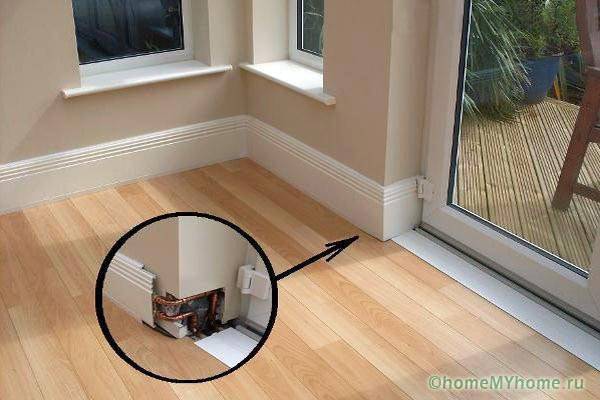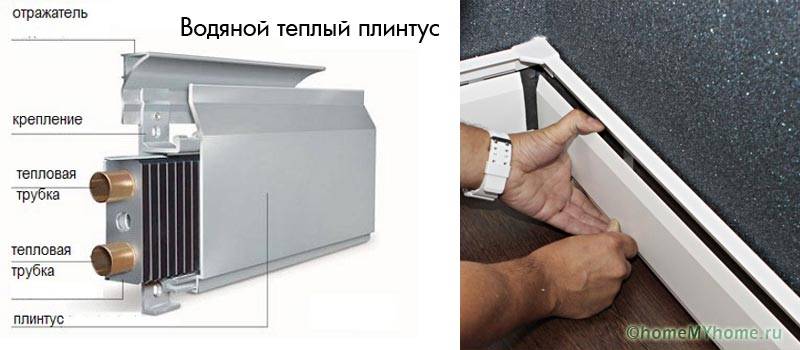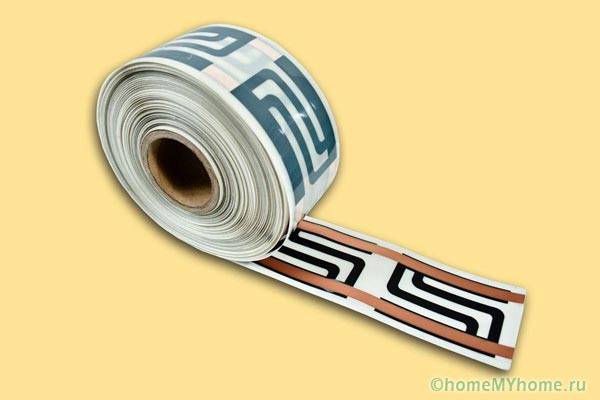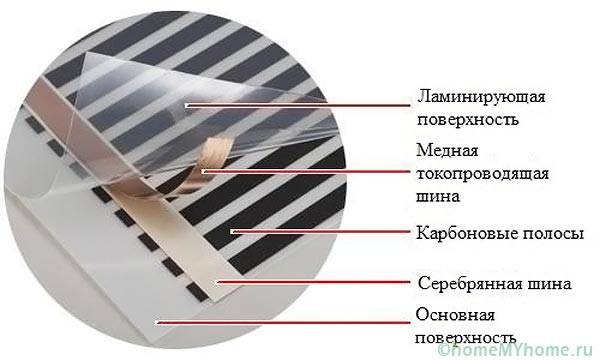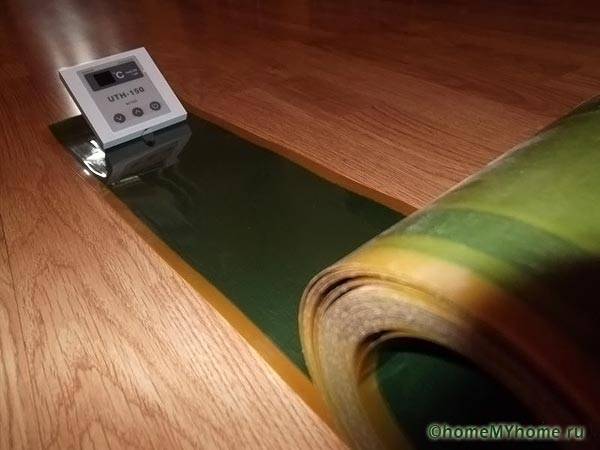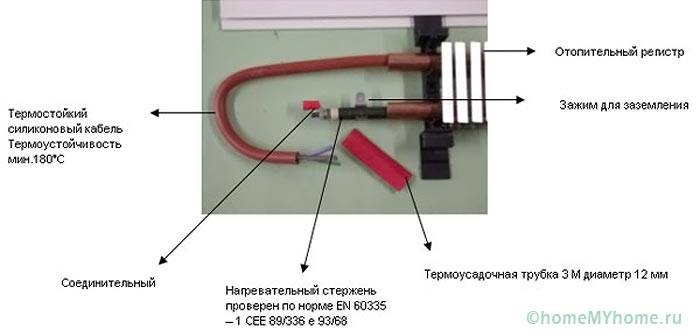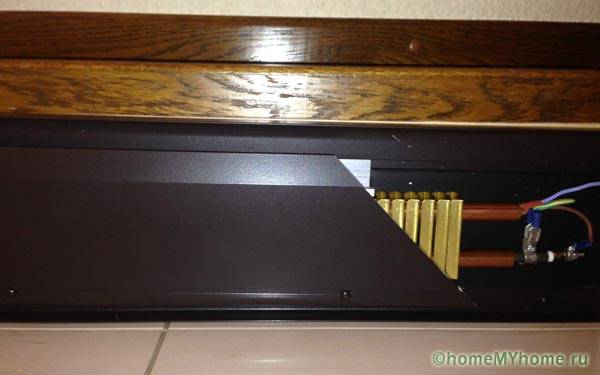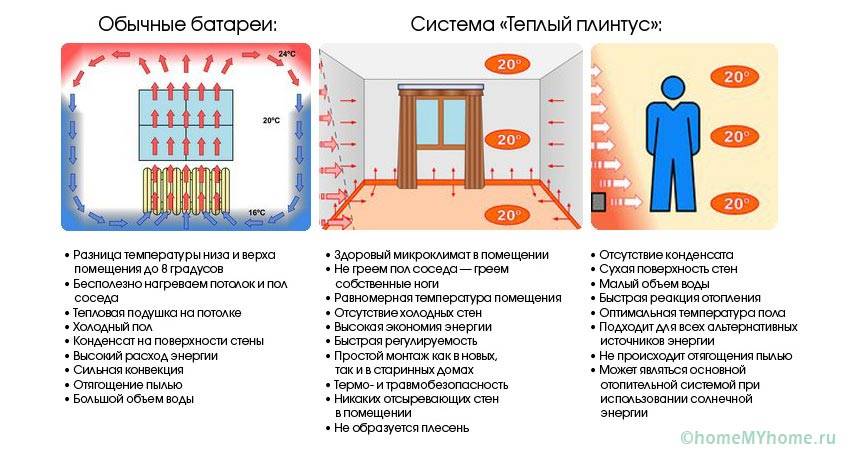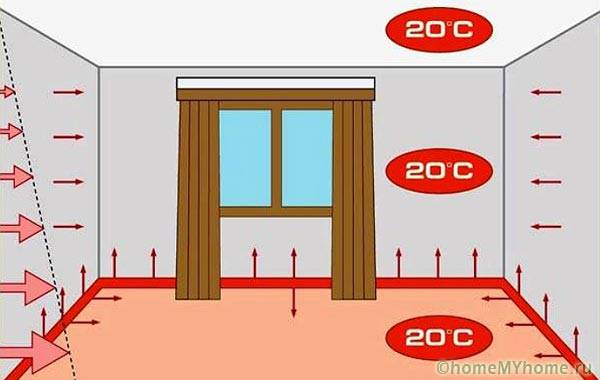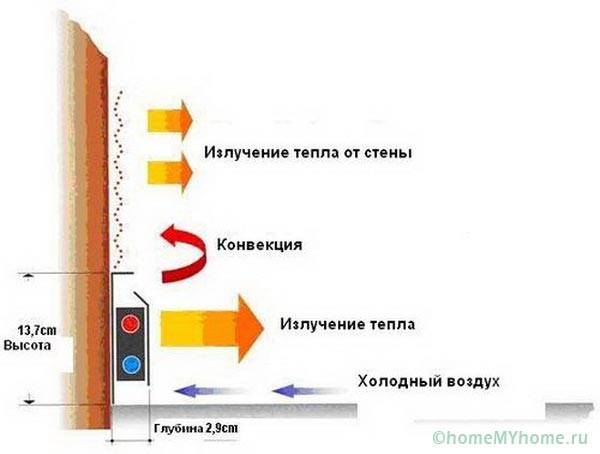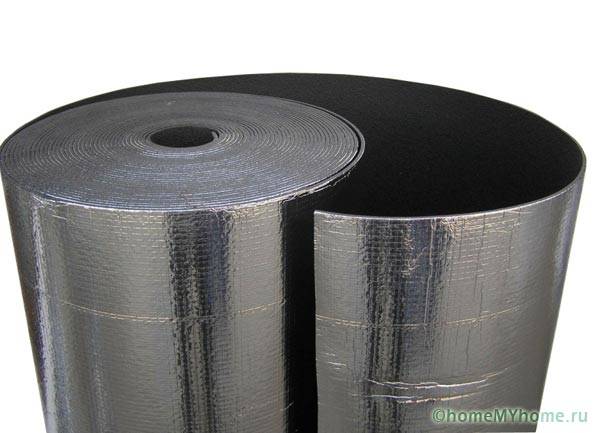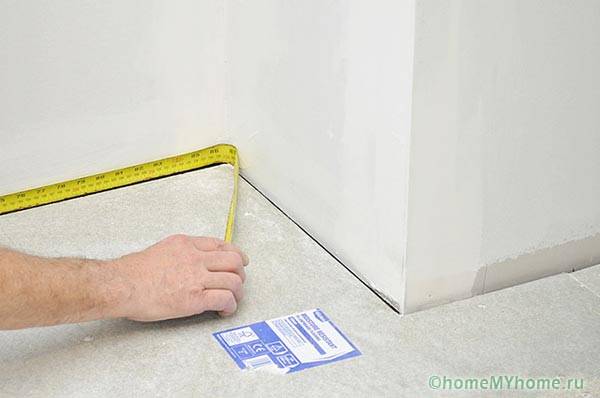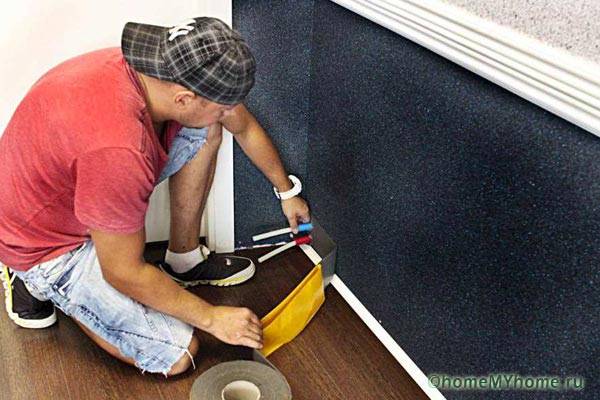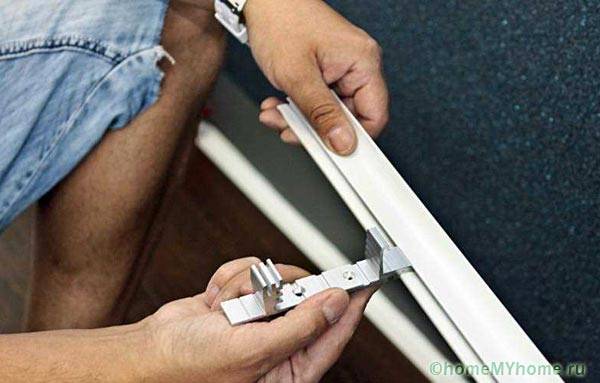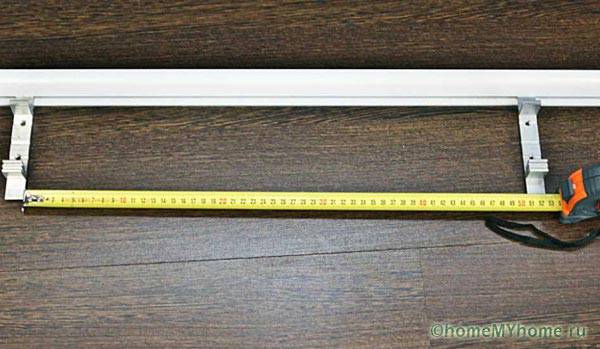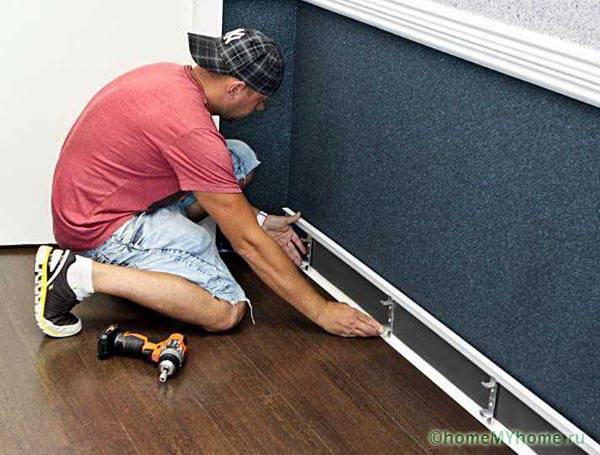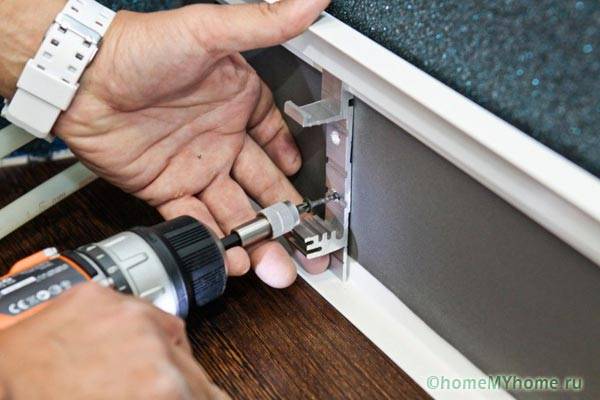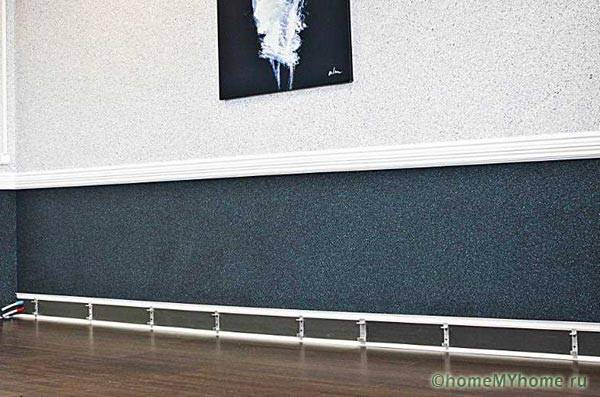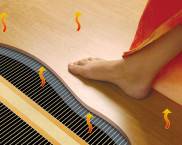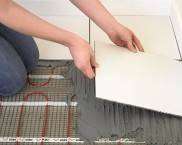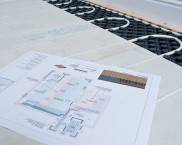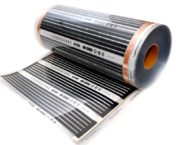Electric warm skirting board: how and when to use it?
Lany heating system must quickly and evenly heat the volume of the room. Conventional radiators cope with this task worst of all, so they are replaced by alternative options for the location of the heating elements. The most economical and easiest in terms of installation is an electric warm skirting board. It is more convenient than a warm floor, warm walls and ceiling, since its installation can be carried out without affecting or destroying the existing finish. The principles of operation, advantages and disadvantages of baseboard heating are described in this material.
The content of the article
Video: warm skirting board
Types of electric skirting boards
A warm skirting board is a kind of compact radiator that is very small in size and is located around the perimeter of the room. Just like classic radiators, skirting boards can be heated using electricity and ordinary water. There are serious limitations for water systems: the length of the circuit is no more than 15 meters, the absence of hydraulic shocks and the need for complex preliminary calculations.
All existing types of electric heaters have no restrictions on the area and volume of the room, are easy to install and take up very little space with high efficiency. The most widespread are two types of heaters - cable and infrared.
Infrared skirting board
Compact and economical infrared electric warm skirting board is a small-sized structure consisting of a body, reflector and heating element. An infrared heater is a device that converts electrical energy into heat. The current from the mains with a voltage of 220 volts is supplied to contacts made of copper and silver-plated plates. These bimetallic electrodes transmit current to carbon (made from carbon paste) strips, which convert alternating electric current into infrared radiation.
IR rays, passing through the film into which the contacts are sealed, heat it and the objects with which it comes into contact. Thus, the film serves as a kind of heat exchanger. The melting temperature of the film is at least 210 degrees, and the carbon contacts are heated by no more than 50 degrees, so the IR systems are absolutely safe from the point of view of fire protection.
To infrared heating was more efficient, foil-clad insulating materials are used as a substrate for the film, which reflect heat in the desired direction. IR heating is the most economical in terms of energy consumption, safe and easy to install. Among the disadvantages is the high price of the film itself and the need to use thermostat.
Related article:
Warm floor under the laminate on a wooden floor. In a separate publication, you can find out how underfloor heating is mounted on a wooden base and all the nuances of installation.
Cable heater
The main requirement for systems used in skirting structures is small size. Electric heating cable, which is used in most heating systems, is an excellent solution in this case. The basis of such a system is a heating cable - a flexible wire in a multi-layer polymer braid.
The current passing through such a wire heats the outer layer to a predetermined temperature. The maximum value is set by the manufacturer and depends on the chemical composition of the polymer from which the cable is made. The thermostat can be set to a lower value.
The heating cable can be used alone or in combination with metal plates for better heat transfer. The first option is much simpler and cheaper, but its efficiency is lower due to the small surface area of the cable. The use of an aluminum or copper heat exchanger is more expensive at the installation stage, however, already in the first heating season, the costs are paid off due to significant savings in electricity.
How skirting heating works
Calculations show that the most efficient heaters are located on the floor, since the main role in any system is played by vertical convection currents.
Related article:
What are the best heating radiators for an apartment? Detailed information on the types and criteria for choosing radiators in a separate publication of our portal.
For use skirting boards three important conditions must be met as heat sources:
- lack of bulky items furniturestanding close to the wall and plinth, since because of them the configuration of the ascending warm flow is disturbed;
- high-quality wall insulation, without which baseboard heating, in principle, cannot work effectively;
- installation of heating elements around the entire perimeter of the room.
An electric floor warm skirting board heats the air that passes through it. There is a heater inside the box, and there are gaps at the bottom and top. Cold air enters the lower slot, heats up and then goes upward along the walls, warming them up. The entire volume of the room is evenly warmed up from the surface of the walls.
Since the heat transfer surface area of any skirting system is small, it is important to provide reflectors that are mounted on the wall behind the heating element, thereby minimizing heat loss.
Installation technology
Installing a warm electric skirting board with your own hands is much easier than a classic radiator or systems warm floor... Before installing the plinth system, it is necessary to measure the perimeter of the room and determine the power of the devices.
For work you will need screwdriver, construction knife, tape measure, pliers and scissors for metal or jigsaw. Installation is carried out after finishing and is reduced to the following five stages:
- installation of the lower guide profile along the entire perimeter;
- fixing the insulating foil material;
- installation of the upper profile with fasteners;
- installation of a heating device - infrared films, cables, heating elements and their connection to the network;
- installation of an external decorative panel.
Areas of use
Skirting heating is very effective in apartment buildings where the walls are well insulated, as well as in large public buildings. While radiators create uncontrolled convection currents and underfloor heating is prohibitively expensive, baseboard heating is the best option. Such systems are ineffective in those houses where there is no necessary wall insulation, since warm updrafts cool down before they have time to heat the room.
Video: installation of a plinth electric heating system



